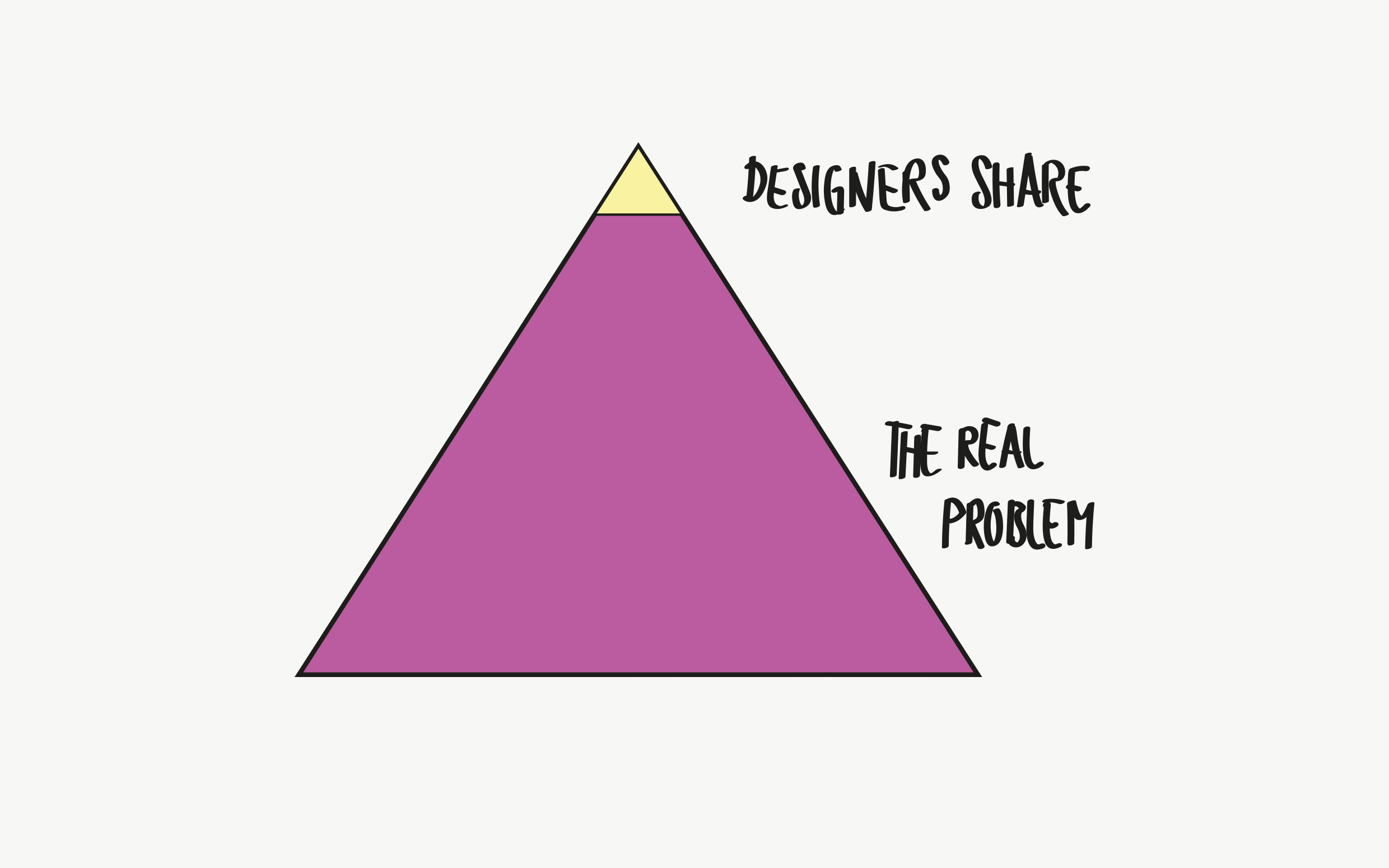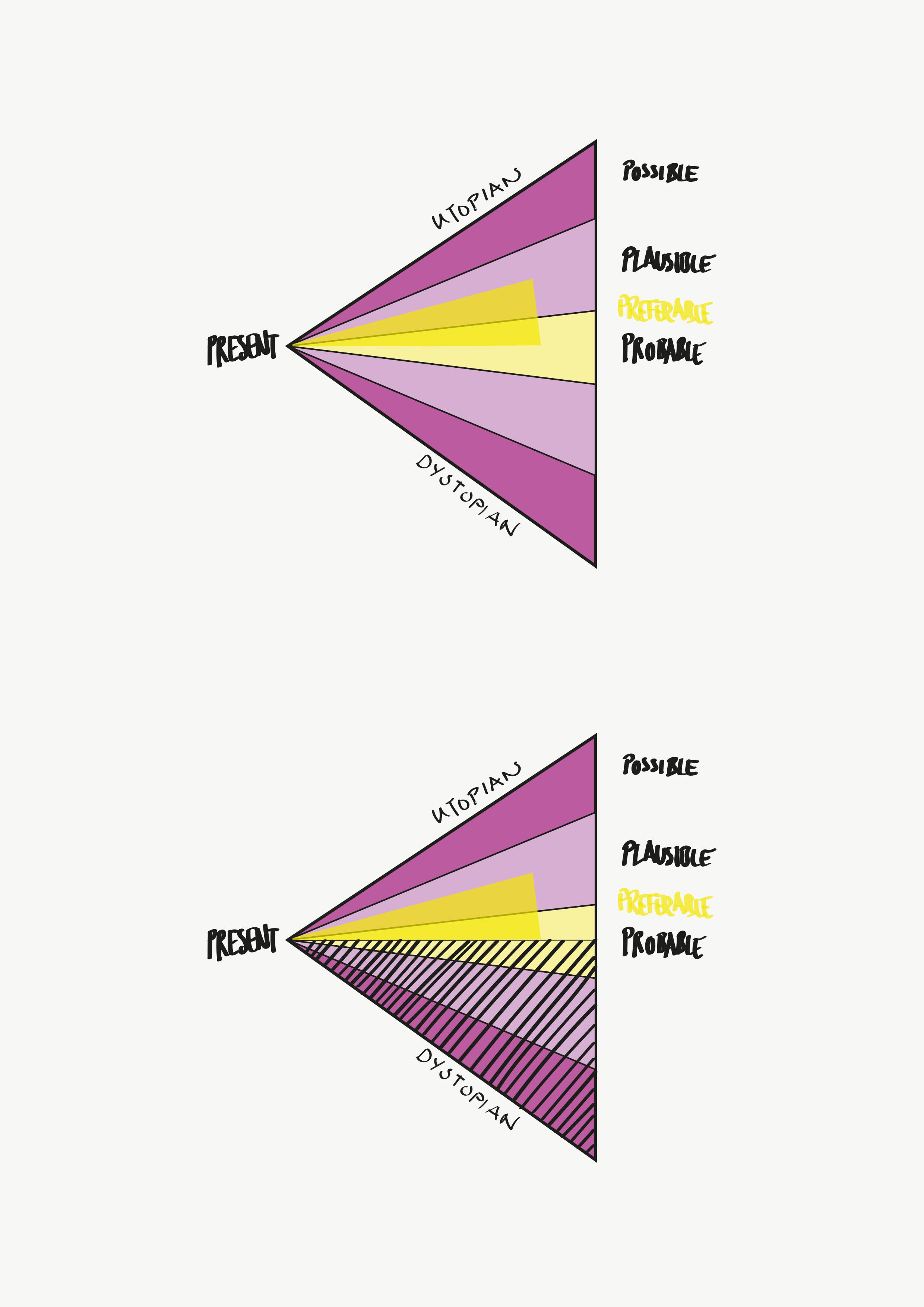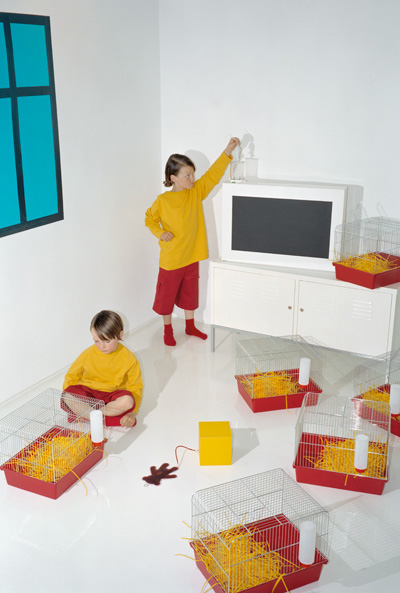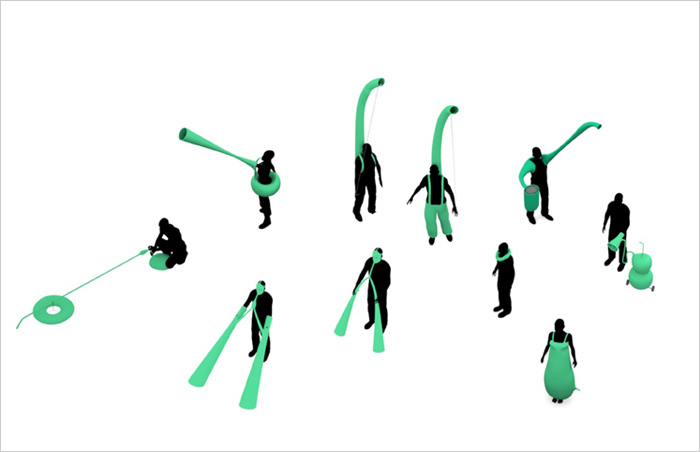Introduction
This paper was written in the course of the lecture series Potentials of Speculation II of the research project Speculative Space of HAW Hamburg, where different perspectives on speculative design were presented. In the following I will explain the practice and intentions of critical and speculative design by starting with a critique of conventional design practice. In particular, I will refer to the term Critical Design and the lecture by Matt Malpass. I will then critically examine the practice, with primary reference to Deepa Butoliya. To finalize the essay, I end with a conclusion and possibilities of adaptation based on the developed critique.
+
Critique on conventional Design
"The most important ability that a designer can bring to his work is the ability to recognize, isolate, define, and solve problems. My own view is that designs must be sensitive to what problems exist" (Papanek, 2019: 151)
+
There is a major problem in current design practice. Already Papanek said that there are few professions more damaging than (industrial and advertising) design (Papanek, 2019). Malpass (2019), as well as Dunne and Raby also emphasize the interpretation of conventional design, which is primarily for consumers and in the service of industry to make the most profit, while not addressing real problems in society. Papanek says, “It seems to me that we can go beyond not working at all but work positively. Design can and must be a way through which young people can participate in changing society“ (Papanek, 2019: p.XIII). Even though Papanek is particularly known for his maximum solution-oriented thoughts and approaches, which is contrary to the approach of Critical Design, the origin, namely the criticism of conventional design practice, is the same. The basic idea of a future-oriented design with the intention to develop society and its habits into a more positive one is in the interest of both.
+
The critique of design practice is based on the fact that the focus of designers is not on people and the environment, but on industry and profit. Figure 1, adapted from a graphic by Papanek (2019), illustrates his view on conventional design. The pyramid represents the problem that exists in the world and should be addressed by solution-oriented design. The problem designers are addressing is only the tiny peak, which is based on a much larger problem that is shown underneath. The real needs of people are being ignored. This graphic illustrates the lack of social engagement in design.
+
To address the problems, to be able to recognize real problems and to be able to communicate them to society, even people that are not directly affected, Critical Design practice can be used. This is not about solving problems, but primarily about identifying and communicating problems in order to achieve discussion and empathy. In Critical Design, questions are asked that intend to make designers and viewers think and thus influence our thoughts and actions in a positive direction. Instead of making us buy, it stimulates us think. It provokes and challenges us as citizens (Dunne and Raby).
+
What is CSD?
Critical and Speculative Design (CSD) is a new approach to design that is not user-centered, but addresses big societal questions and looks to the future. The aim is to produce not just things, but ideas, and to make both the designer and the audience aware of how design and technology are shaping our near future. In speculative design practice, the designer creates objects and ideas of possible futures and relates them to the present. In this way, both the designer and the audience are made to think about political and social implications of current design and especially technology. The goal here is to provoke discussion within the audience and thus potential future users, rather than focusing on finding solutions and functionally producing new products.
+
Associative, Speculative and Critical Design
In its practice there are three categories of approaches, that all may fit “under the overarching rubric ‚critical practice‘ of design, but these will further be differentiated and presented as associative design, speculative design, and critical design“ (Malpass, 2017: 91). Malpass defines the categories through their different objectives of critique. The historical first of the three, which is associative design, is the approach that “focuses on disciplinary concerns“, speculative design, as the newest, “focuses on science and technology“ and critical design “critiques current social, cultural, technical, and economic controversies and hegemony“ (Malpass, 2017: 91-92).
+
“Future visions - ideas about what the future might, will and should be like - have a realising power of their own. They shape choices in the present, which cumulatively shape the future as it emerges. In other words, our collective hopes, ideals and expectations of the future play a role in the future presents that come about“ (Kuijer, 2020: 152). Within speculative design there are two approaches: designing "speculative futures" and designing "alternative presences". This involves selecting one possible scenario from a multitude of possible scenarios to answer the question "What, if?“, which no one can make an ultimate prediction. Speculation in design, to distinguish it from future speculation, is not just based on scientific laws and principles, but also involves cultural elements as the role of trends and human choices.
+
Often critical speculative design is dismissed as art, because of its symbolic character and the missing usability and utility of the designed products. As Dunne and Raby point out that “It is definitely not art. It might borrow heavily from art in terms of methods and approaches but that's it. We expect art to be shocking and extreme. Critical Design needs to be closer to the everyday, that's where its power to disturb comes from. Too weird and it will be dismissed as art, too normal and it will be effortlessly assimilated“ (Dunne and Raby).
+
Critical Design
“If speculative design focuses on science and the potential applications and implications of emerging technology, then critical design focuses on present social, cultural, and ethical implications of design objects and practice. It is grounded in critical social theory.“ (Malpass, 2017: 107).
+
Critical Design deals with the social questions that arise when looking into the future. The designer deals specifically with the wide mass of possible and probable future scenarios that can be derived from technical and design advances or current trends. In the context of critical speculation, the main focus is on possible dystopian scenarios in order to encourage reflection in the viewer and thus change in society. Graphic 2 is based on the graph “A Taxonomy of Futures“ from Dunne and Raby, original from Stuard Candy, and graphically represents the approach to future speculation. Graphic 3 additionally hatches the area that the Critical Design approach focuses on to achieve the desired future.
+
Critical Design uses design fictions and speculation to challenge assumptions and ideas about the role objects play in everyday life. Rather than emphasizing the commercial purpose or physical function and utility of an object, it focuses on making visible the deeper value and impact of products. It challenges us to confront the critical challenges facing our planet, businesses and people now and in the years to come. To do this, the designer uses satirical techniques such as obscenity, violence, and understatement (Malpass, 2017). Different types of satire are used to engage the audience through prolepsis and allegory. “Critical design is characterized by its dark humor“ (Malpass, 2017: 108). “Design works in this category focus on the social, cultural, and ethical implications of design objects and practices, using design practice as a tool to challenge norms“ (Malpass, 2017: p.108). It is used to engage the audience to recognize, experience, and explore these.
+
Storytelling is important for both realization and success. To do this, products are often presented using narrative media that shows it in use in the form of a collage, a video, or through photographs, as shown in the images below. The products are placed in a contemporary, everyday setting in which as many people as possible can find themselves in. The combination of the usual everyday life with the designed product, which is based on visions of the future, usually creates dystopian ideas of near futures, which should appeal to the viewer emotionally. Ideally, the designer should succeed in giving the user the feeling that something is not quite right and convey a certain unease between reality and fiction (Malpass, 2017).
+
“The aim with this is to expose assumptions, provoking action, and stirring debate“ (Malpass, 2017: 108). The use of dystopian ideas serves to highlight societal trends and lifestyles that could or will have a negative impact on our future. In this way, viewers are encouraged to think, self-reflect, and change or adapt their habitual behaviors.
+
To illustrate the work and role of the critical designer, Malpass explains his view of the work of critical speculative designers with the metaphor of „playing the fool". Just as the fool in the Middle Ages was the only one who could talk to the king and, through access to the highest class, was the only one who could criticize, the designer is the one who talks to the experts and is able to bring views, questions, and ideas to the process that only arise outside the circle of experts. He is also able to bring a critical social and cultural view from a different perspective to the technically forward based work of scientists. In addition, he explains how the designer takes on the role of an "engaged idiot" who stands outside the inner circle of experts and can ask questions that experts don't think about, bringing a bottom-up view to the process to make the technology work for a wide plurality. “The idiot does not know but is capable of knowing and importantly through seeing alternatives through cultivation of emergencies and difference“ (Malpass, 2021).
+
With the practice of critical speculative design the designer is not only the engaged idiot but also engages the audience to ask questions and brings people in conversation around the work he is presenting. “This is to learn of the plurality of voices“ (Malpass, 2021). “Critical design can and should play a role in democratising and anticipating future everyday life“ (Kuijer, 2020: 151).
+
Critique on critical speculative design
Even if the practice of speculative, critical design in theory reaches deeper into problem analyses and strives for the integration of public opinion, which could be called an act of democratization of technology, science and design, there is also criticism of the interpretation as such. In the spirit of plurality and democratization of progress, participation, exchange, and opinion formation, each and everyone among the future vision should be considered as much as possible, and should be viewed from as many perspectives as possible, especially from the weaker social groups. Even though the intentions of the Critical Design approach are very good, the idea and the practice is not structured open to everyone globally, which makes the western works and thus western views dominate. Butoliya (2015) criticizes this very subjective interpretation and presents a bottom-up alternative form of critical speculative design emerging from Indian tradition.
+
Critical Jugaad
“There is an urgent need to bring plurality in this discourse and bring forth realism in speculation. We need to change the techno-fetishism of current times and channel the discourse of people towards alternative possible futures“ (Butoliya, 2015).
+
Criticism due to the lack of realism and perspective of groups of people without access to the latest technologies, as well as the basic idea that visions of the future are only interesting for people who do not suffer from already existing problems, are fundamental positions to consider. As Butoliya says: “Visioning for future is a privilege“ (Butoliya, 2015).
+
Butoliya criticizes the conventional design practice as well as the critical and specu-lative design approach due to its expert driven base. She points out that this fastens the western and non western difference that still exists. To get beyond the still existing postcolonial structures it needs design approaches that are bottom up.
+
As she has criticized the expert-driven basis on which critical and speculative design is built, she has raised the cultural practice of Jugaad to a higher symbolic level, introducing the idea of “Critical Jugaad“. It offers the possibility of creating symbolic and provocative objects without the need for higher or highest technological experts. Thus, other perspectives and visions of the future based on fundamentally different, possibly much more important problems are addressed. Graphic 4 illustrates the differentiation between the four mentioned concepts on the basis of its pragmatistic or symbolic background and the characterization rather its more expert driven or bottom up driven.
+
“The current discourse in Speculative and Critical Design about relationship with technology which prompts critical response is predominantly about romanticizing with our relationship to technology and is fashionably a very nuanced first world problem. Nevertheless, this bears seeds of creating a future course of action through deep reflection and contemplation which is a very privileged act“ (Butoliya, 2015).
+
Further critique
A supportive statement for Butoliyas approach is provided by Papanek in the preface to his second edition in the early 1980s: „(…)poverty is the mother of innovation. (…) The developing countries and all the rest of us must cooperate by combining simpler and small scale approaches with new technologies, which for the first time make decentralized and humanize development feasible.“ (Papanek, 2019: XXI). Beyond the dominant European perspective of Critical Design, there is further criticism of Critical Speculative Design. One negative aspect is that the work is often presented in the form of exhibitions in museums. Dunne and Raby for example showed their work in 2021 in the Museum of Modern Art, New York and in 2020 in the Centre Pompidou, Paris, to name only two of the many exhibitions they did. The absence of the designer complicates the research goal from discussions by the viewers. In addition, the design does not reach the desirable diverse audience, but remains mostly with design-interested people who can afford museum visits.
+
Or as Koskinnen et al formulate it: “Critical design typically disseminates its work in academic conferences, in museums or in contemporary design galleries. These environments provide a safe and intellectual space for expression and imagination. However, such dissemination space might influence discussions around a critical design, as a curated exhibition is typically themed towards a particular topic. But more importantly, critical designs might not reach their intended audience - the people who are closer to a commercial context (Koskinnen et al, 2011)“ (in Kjærsgaard, Boer, 2015: 5).
+
As Critical Speculative Design is differentiated to critical art with the cause of a more realistic and closer to the audience due to its usability demonstrated through narrative, it should then not be presented like artworks in museums. It should be open accessible for all and with the chance to give feedback on thoughts and ideas or open discussion. Critical Speculative Design is at present especially accessible to museum visitors interested in design, design students which have the opportunity of higher education and other people somehow related to the field. To make the design help with creating more open, democratic, social future visions it needs to go beyond that reach and allow people of different groups, ages, cultures, etc. to experience and participate in an open discussion. This could lead not just only to bottom up views but maybe also to bottom up solution building.
+
What Potentials does Critical and Speculative Design have?
“Alternative future visions are needed to defend the interests of other, less powerful stakeholders“ (Kuijer,2020). Critical and Speculative Design is a good way to share and discuss new scientific technological tendencies as well as social phenomena with the public. It offers the possibility of “diversifying and enriching visions of future everyday life within design“ (Kuijer, 2020) and to open up the otherwise very expert-led development and design of products to let society participate. Trends and acceptance could thus be recognized even before they are brought to market. Special focus should be placed on the possible negative effects that can develop out of behavioral patterns and technical advancements. The design approach that focuses on possible future scenarios brings the ideas and progress of scientists to the wider public long before final products are produced for the mass market, and thus can help recognize early on what works and what doesn't. Critical and Speculative Design allows visions to be brought into society and to the consumer, informing not least trends and developments. This opens up discussion among all involved, not just the professionals. This could help technology and future products work toward more desired or even greater needed proceed, rather than just scientific progress. Open discussion could also generate many new ideas from different interest groups in society.
+
In addition, through designed possible future scenarios, the dystopian view can make the audience rethink their values and consumption and make us shift towards a more sustainable, ethical society. This use of design is well adapted to communicate current problems in society and politics and to make people think about their habits. In my opinion the highest potential of critical and speculative design therefor lies in the aspects of increasing awareness for ecological and social consequences of one's actions and in increasing a sense of value and empathy. Furthermore, the democratization of design and science that is possible by opening up the discussion and thus achieving social participation in visioning about future is an important aspect and a great potential that should be highlighted but is not yet sufficiently implemented in current critical design work. Taking this idea further, I see the approach as an opportunity to reduce the deep-seated barriers in our society that are created by education and societal structures. For this reason, the critical design approach should definitely be considered and optimized when it comes to developing socially responsible design.
+
How could CSD be developed?
As Kuijer points out: “Further research is needed into how critical fictions are best integrated into mainstream design practices“ (Kuijer, 2020). “Where social design meets ethnography, there is often a meshing of roles where researcher becomes design facilitator and designer becomes research investigator“ (Kjærsgaard and Boer, 2015). Designers could use the Critical and Speculative Design approach to do intense and deep research on a higher level to push social design to its best. Researching through design opens a new, more creative and diverse way to do research and collect or work out new Ideas. Moreover, it can be used to better communicate problems addressed by designed products to the audience.
+
As already mentioned in the previous section a real important point is to avoid putting the works in museums and thus not keeping it in the familiar bubble but to show the work to the wide society in open exhibitions and public places.
+
Natalie Dittmar
+
.
+
Literature
Butoliya, Deepa. 2015. Critical Jugaad and Disruptive Speculation literature review 2015.
+
Dunne and Raby. Critical Design FAQ. http://dunneandraby.co.uk/content/bydandr/13/0 (12.08.2021).
+
Kjærsgaard, Mette Gislev and Boer, Laurens. 2015. The speculative and the mundane in practices of future-making. Exploring relations between design anthropology and critical design.
+
Kuijer, Lenneke. 2020. “Democratising and anticipating everyday futures through critical design. A review of exemplars”. Temes de Disseny 36: 150-177. https://doi.org/10.46467/TdD36.2020.150-177
+
Malpass, Matt. 2017. Critical Design in Context. History, Theory, and Practice. Bloomsbury. London.
+
Malpass, Matt. 2021. Transcription of the Lecture for Potentials of Speculation II.
+
Papanek, Victor. 2019. Design for the Real World. (3rd edition). Thames &Hudson. London.
+
+
Images
(All used graphics in this paper are redrawn, based on the following origins)
Graphic 1: The Design Problem: Papanek, Victor. 2019. Design for the Real World. (3rd edition). Thames &Hudson. London. p. 57. +
Graphic 1: The Design Problem: Papanek, Victor. 2019. Design for the Real World. (3rd edition). Thames &Hudson. London. p. 57. +
Graphic 2+3: A Taxonomy of Futures: Speculative Everything Redrawn from Stuart Candy. (slightly adjusted).
+
Graphic 4: Butoliya, Deepa. Image out of the Lecture for POS II (slightly adjusted).
+
Image 1: Blood/Meat energy Future, Dunne and Raby, 2004. http://dunneandraby.co.uk/content/projects/68/0 (12.08.2021).
+
Image 2: Designs for an Overpopulated Planet, Dunne and Raby, 2009. http://dunneandraby.co.uk/content/projects/510/0 (12.08.2021)
+





